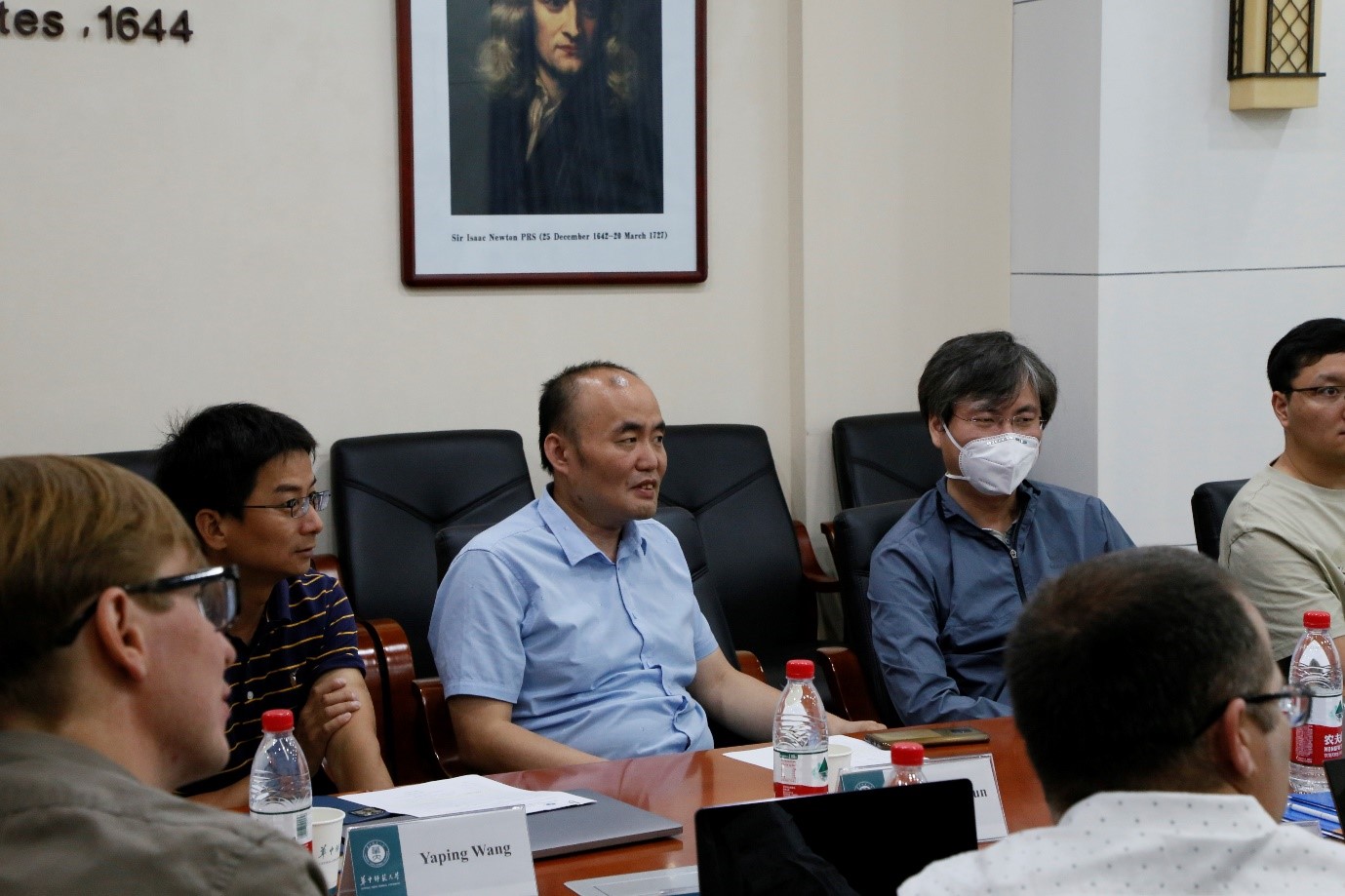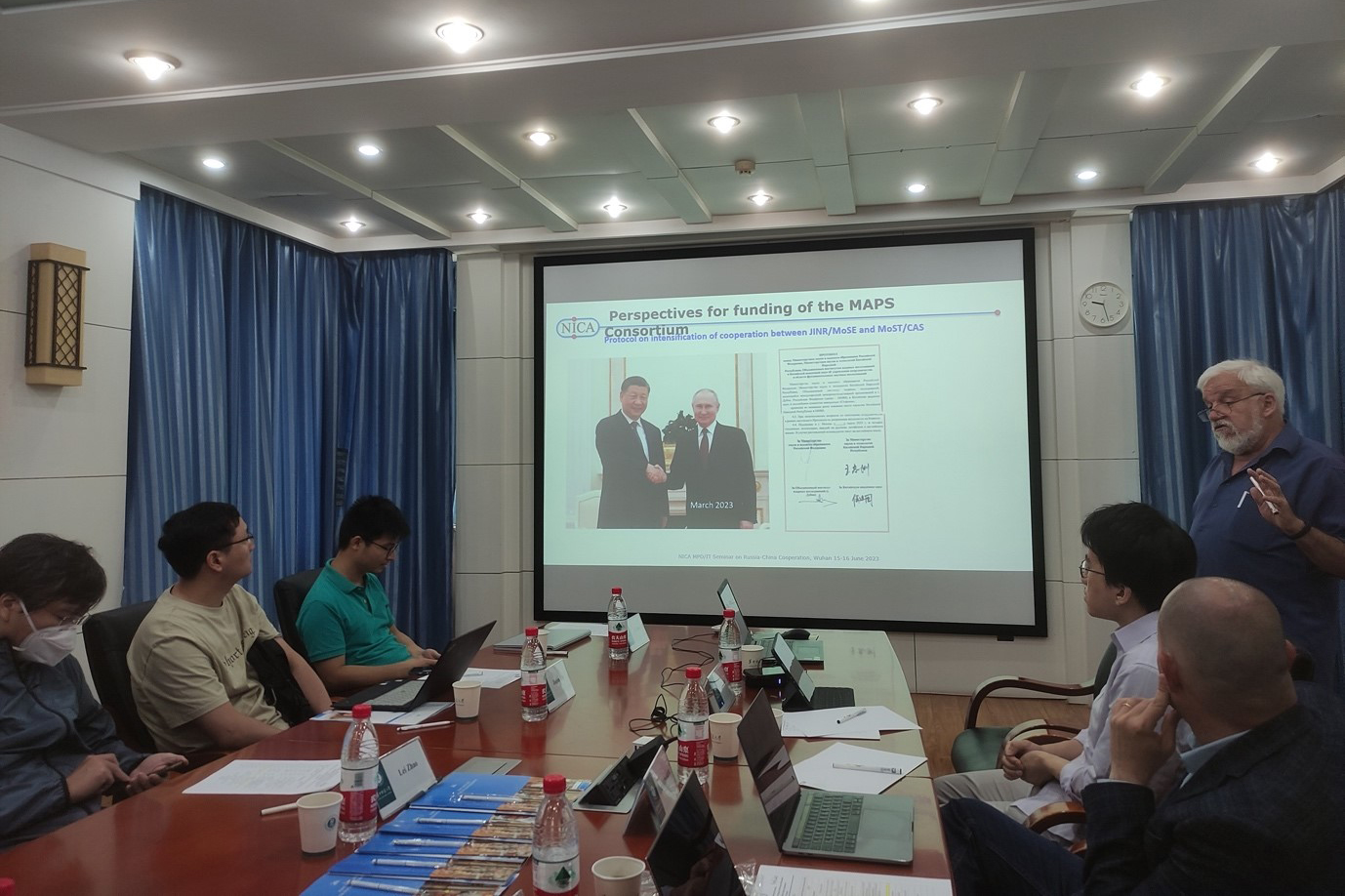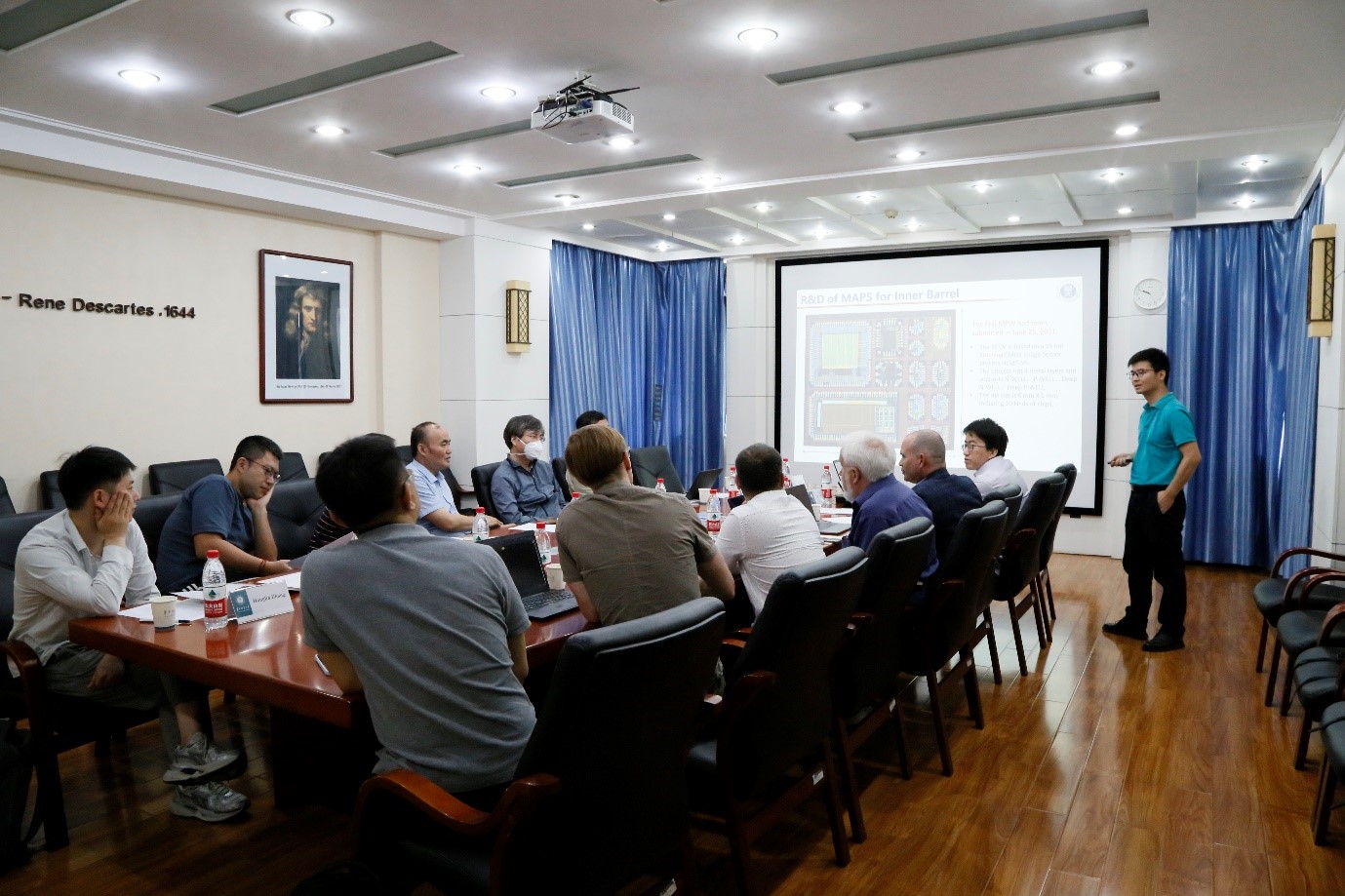JINR and China will produce detectors for experiments on fundamental science and medicine
News, 28 June 2023
In mid-June, in Wuhan, JINR specialists discussed with their Chinese colleagues joint development of equipment for the NICA Megascience Project. At the initiative of the Joint Institute, there will be a new joint project created. Its main objective will be the development and production of Monolithic Active Pixel Sensors (MAPS) for cutting-edge fundamental and applied scientific experiments.
The NICA-MPD/IT Seminar on China-Russia Cooperation was organized within the work plan of the running cooperation agreement on the NICA Megascience Project and the Key Laboratory of Quark and Lepton Physics of the Ministry of Education (MOE) at Central China Normal University (CCNU). This agreement focuses on the joint use of emerging CMOS technologies for the development of large area tracking systems for the experiments in Russia and China in 2019 – 2025. This in-person meeting was jointly organized by JINR and the CCNU and hosted at the Pixel Lab at CCNU (PLAC) in Wuhan.
The delegation from JINR was composed by specialists of the VBLHEP Silicon Tracking Systems Department Yuri Murin, César Ceballos Sánchez, Dmitry Dementiev and Raúl Arteche Díaz. From the Chinese side the organizing committee was led by Prof. Xiangming Sun (CCNU) and Prof. Yaping Wang (CCNU) having other participants from the CCNU, the University of Science and Technology of China (USTC, Hefei), the Institute of Modern Physics (IMP, Lanzhou) and the Institute of High Energy Physics (IHEP, Beijing), the last two administrated by the Chinese Academy of Sciences.
The JINR specialists had a very useful and fruitful experience during the two days of open discussions on the topics of common interests. A visit to the research facilities at PLAC was organized within the meeting’s programme.
The first session was dedicated to reports and discussions of the status of the work from both parties in connection with the production and assembly of the Inner Tracking System (ITS) of the MPD Experiment, which will be fully composed of MAPS similar to those used for the recent upgrade of the ALICE-ITS detector at CERN. Due to external reasons, there is а delay in fulfilling the project. Nevertheless, Chinese institutions have been able to accomplish a considerable part of their planned works. The main unsolved task of the project is related to the MAPS chips. JINR and CERN have signed a contract on their production. Their delivery to JINR is now delayed, and their production cannot be implemented within the current cooperation with Chinese colleagues, since it has not been planned eqrlier.
To solve this problem the JINR specialists proposed to scale up current collaboration with the creation of a “China-Russia MAPS Consortium”. The aim of the Consortium, which is organized with the participation of the institutions attending the meeting and Saint Petersburg University, will be joint development, production and employment of MAPS chips that would be free-of-restrictions to be used both in China and Russia.
In this regard, a project “Monolithic Pixel Detectors for fundamental and life sciences”, which can be implemented within the programme of the protocol on strengthening cooperation between JINR and China signed on 21 March 2023. The project duration is planned for five years with equal shares funding by Russia and China. Its main objective is the development and production of Monolithic Active Pixel Sensors for front-end fundamental and applied science experiments. These chips will be the central piece for the tasks within the joint modernization of basic facilities of the NICA Project for conducting fundamental studies. They will be also used for applied developments. That is for the MPD Inner Tracking System, and a prototype of a clinical tomograph for the proton Computer Tomography (pCT). It is foreseen to base the related readout electronics on ASICs from the GBTx-like family. These chips will be independently developed and produced in China within the project implementation based on the currently ongoing developments of readout chips (NICA_ROC) for the MPD-ITS project and the NICA_GBTx, including NICA_LD (Laser Driver) and NICA_TIA (Transimpedance Amplifier).
In the case of the MAPS-based clinical tomograph prototype, specialists will evaluate the possibility of the use of the resulting device as a treatment planning tool for proton therapy at JINR Medical-Technical Complex (MTC). By using the same particle (proton) both for diagnostic imaging and for therapy as well, the uncertainty range of the treatment is expected to be decreased to 0.3-1% from the usual value of about 7% of the proton therapy planning based on photon-CT imaging. The development of this device would benefit from the experience and tools already developed by the team of the Institute of Modern Physics (China) that has already taken over the development of the MAPS-based Carbon-CT device. Modeling and evaluation tools developed by specialists of the Chinese institute and JINR will be also used.
During the subsequent round table discussion, the necessity was recognized for Chinese and Russian scientific institutions to be able to get stable and free access to state-of-the-art microelectronics. As so, each institution presented its capabilities and expertise for the synergetic accomplishment of the objectives of the proposed project at its various stages. The final result of the discussion was that the Chinese institutions participating in the meeting unanimously supported the initiative from JINR and expressed their desire to participate in the proposed Russia-China Consortium for the joint development, production, and practical utilisation of the Monolithic Active Pixel Sensors for fundamental and life science programmes within the NICA Megaproject. Both parties have already started to work on the iterative preparation of the project’s draft that will consist of 10 working packages. Participants have agreed to hold the next in-person meeting of specialists in December 2023 in Dubna.






